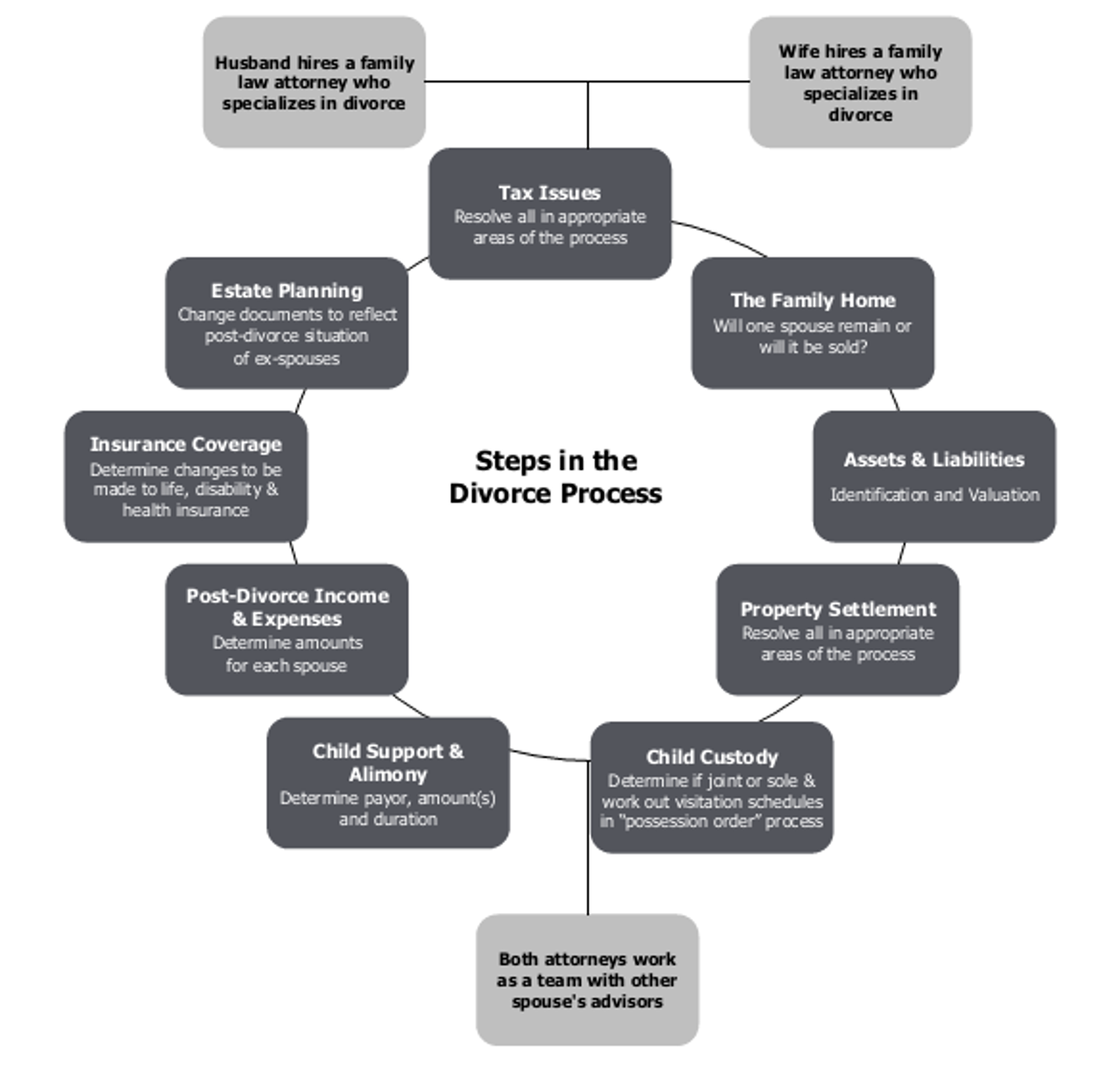![]()
Table of Contents
Introduction To The Marital Home in Divorce
For most married couples, the Marital Home is their most valuable asset. If the home was bought during the marriage, regardless of who is on the deed or mortgage, it may be marital property and subject to equitable distribution. The most frequent questions I hear are:
- Who gets the house?
- Can I live in the house until the children graduate?
- Can I buy out my spouse?
In this article, I will address these 2 main questions and discuss other considerations of the marital home in divorce.
Can I stay in the Marital Home Until the Children Graduate?
Perhaps the most frequent question I hear is “Can I stay in the marital home until the children graduate?” The answer depends on the age of the children. If the child is 16, then most judges will delay the sale of the house until the child graduates High School. There is a preference for the children to graduate with their high school class. Divorce is disruptive enough, and we want to minimize the effect on the children.
However, if the child is in middle school or even elementary school, then the court will probably sell the house sooner rather than later.
If the child is going to a private school, and moving will not affect the child’s attendance, then the marital home will probably be sold before graduation.
Judges generally do not delay the sale for graduation from college.
The parties, however, can agree between themselves to delay the selling of the house for any period.
Selling the Martial Home Before or After Divorce: Weighing the Pros and Cons
When it comes to selling a marital home during a divorce, many couples wonder whether it’s better to sell before or after the divorce is finalized. Each option has its own advantages and disadvantages, and the right choice depends on the unique circumstances of the couple. Let’s take a closer look at both scenarios:
Selling the House Before the Divorce is Finalized
Selling the marital home before the divorce is finalized offers several benefits. First, it allows both parties to move forward and start anew, avoiding potential complications associated with dividing the property later on. Putting the house on the market early maximizes the time it’s available for potential buyers, increasing the chances of receiving favorable offers.
Another advantage of selling the house before the divorce is the potential for tax benefits. If both parties have already moved out of the marital home and its value appreciates during the waiting period for the divorce to be finalized, there could be capital gains tax implications. By selling the house before the divorce is finalized, couples may potentially minimize or avoid these tax consequences. Remember the more the value of the house has gone up from the initial purchase, the more takes may have to be paid.
Remember to consult with your accountant on all tax questions, and do not rely on your lawyer. We are not allowed to give tax advice.
However, selling the marital home before the divorce is finalized also comes with potential challenges. Both parties need to cooperate and agree on the sale, which can be difficult when emotions run high. Effective communication and finding common ground are crucial to ensure a smooth selling process.
Selling the Martial Home After the Divorce is Finalized
Selling the marital home after the divorce is finalized may be a simpler option for some couples. Once the divorce is officially completed, the division of assets, including the house, is legally determined. With a marital settlement, the terms of how and when the house will be sold are clearly set forth in the agreement. It should smooth the path.
If there was a trial, the Judge will provide strict rules for the sale of the house, and may also have appointed a realtor to actually sell the marital home.
Another advantage of selling the house after the divorce is that both parties have a clearer understanding of their individual financial situations. Waiting until after the divorce is finalized allows for better-informed decisions about the sale and division of proceeds.
On the other hand, selling the house after the divorce is finalized may also present challenges. The process of finalizing a divorce can take time, and during this period, the housing market conditions may change. Unfavorable market conditions could result in a lower sale price or a longer time on the market, impacting the overall financial outcome for both parties.
Legal Considerations for Selling a House During a Divorce
When selling a house during a divorce, it’s crucial to consider the legal aspects and potential implications. Here are some key legal considerations to keep in mind:
Ownership and Division of Proceeds
Determining ownership and the division of proceeds from the sale depends on the specifics of the divorce and any agreements made between the parties. Generally, there are three common scenarios:
- One spouse buys out the other’s legal interest in the house and keeps it.
- One spouse retains use and occupancy of the house for a specified period, typically until a certain event, such as the youngest child turning eighteen, and then the house is sold.
- The house is sold immediately, and the proceeds are divided between the parties according to the agreed-upon terms.
Consulting with a divorce attorney is essential to ensure that the division of proceeds aligns with the divorce settlement and legal requirements.
I personally like the buy-out of the marital home by one of the parties. This involves getting an appraisal from a licensed appraiser, not a realtor. The buying spouse will then refinance the house for the value of the original mortgage, and the amount of money that the other spouse will receive.
For example, assume that the marital home is appraised at $500,000 and the amount remaining on the mortgage is $300,000. The equity left in the house is $200,000. The buying spouse will have to refinance the mortgage for $400,000. This is the original $300,000 plus the $100,000 to buy out the other spouse.
The advantage to the spouse being bought out is that there are no broker’s fees or capital gains taxes. The buying spouse gets to remain in the marital home, and the cost basis for the house may have increased. Again, for all tax questions consult with an accountant as lawyers cannot legally provide tax advice.
Mortgage and Financial Obligations
Addressing any outstanding mortgage payments and financial obligations associated with the property is crucial before selling the house. These may include equity lines of credit, second mortgages, or broker fees. Resolving these obligations properly is vital for a smooth sale process.
Capital Gains Tax
Selling a house during a divorce may have tax implications, particularly in terms of capital gains tax. If the house has appreciated in value since its purchase, there may be capital gains tax consequences upon the sale. Consulting with a tax professional can help understand the potential tax implications and plan accordingly.
Steps to Successfully Sell a House During a Divorce
Selling a house during a divorce can be a complex process. Here are some steps to navigate the sale successfully:
- Consult with a Divorce Attorney: Seek guidance from a divorce attorney to understand the legal requirements and implications specific to your situation.
- Determine Ownership and Sale Terms: Work with your spouse and attorneys to determine ownership and sale terms, including responsibilities for listing, pricing, and negotiations.
- Choose a Real Estate Agent: Select a real estate agent experienced in working with divorcing couples. Their expertise can help minimize conflicts and guide you through the selling process.
- Prepare the House for Sale: Ensure the property is in good condition and presentable to potential buyers. Make necessary repairs, declutter, and consider staging the house for optimal appeal.
- Set an Asking Price: Collaborate with your real estate agent to determine an appropriate asking price based on market conditions and comparable sales.
- Market and Show the House: Your agent will market the property and schedule showings. Maintain open communication with your ex-spouse to coordinate showings and ensure accessibility.
- Evaluate Offers and Negotiate: Review offers with your attorney and agent. Negotiate with buyers to secure favorable terms and sale price.
- Finalize the Sale: Work with your attorney and agent to complete any legal requirements, settle outstanding obligations, and facilitate a smooth transfer of ownership.
- Divide the Proceeds: After the sale, distribute the proceeds according to the agreed-upon terms in the divorce settlement. Consult with your attorney and financial advisors to ensure a fair distribution.
- Seek Professional Guidance: Throughout the process, seek guidance from professionals specializing in divorce real estate sales. They can provide expert advice and support for a successful sale.
Conclusion
Selling a house during a divorce can be challenging, but with careful consideration, open communication, and professional guidance, couples can navigate the process successfully. Understanding the advantages and disadvantages of selling before or after the divorce, addressing legal considerations, and following the necessary steps are crucial for a smooth and fair transaction. By prioritizing cooperation, effective communication, and the best interests of both parties, you can achieve the best outcome when selling a house during a divorce. Call Port and Sava for a Free 15 Minutes telephone consultation.















